Election cycle and aggregation
Identifying the election cycle in which a candidate is running for office is required to register as a candidate and properly disclose financial totals on their report of receipts and disbursements.
An election cycle begins the day after the previous general election for a given federal office and ends on the date of the general election for that office. The number of years in an election cycle differs according to the federal office sought. The election cycle spans two years for House of Representatives candidates, four years for presidential candidates, and six years for Senate candidates.
| Election cycle | Dates |
|---|---|
| 2024 House of Representatives | 11/9/2022 – 11/5/2024 |
| 2026 House of Representatives | 11/6/2024 – 11/3/2026 |
| 2024 Senate | 11/7/2018 – 11/5/2024 |
| 2026 Senate | 11/4/2020 – 11/3/2026 |
| 2028 Senate | 11/9/2022 – 11/4/2028 |
| 2024 Presidential | 11/4/2020 – 11/5/2024 |
Reporting on candidate forms
Candidates must register for each election cycle for which they are a candidate. They do so by filing a Statement of Candidacy, Form 2, and noting the year of election on Line 7.
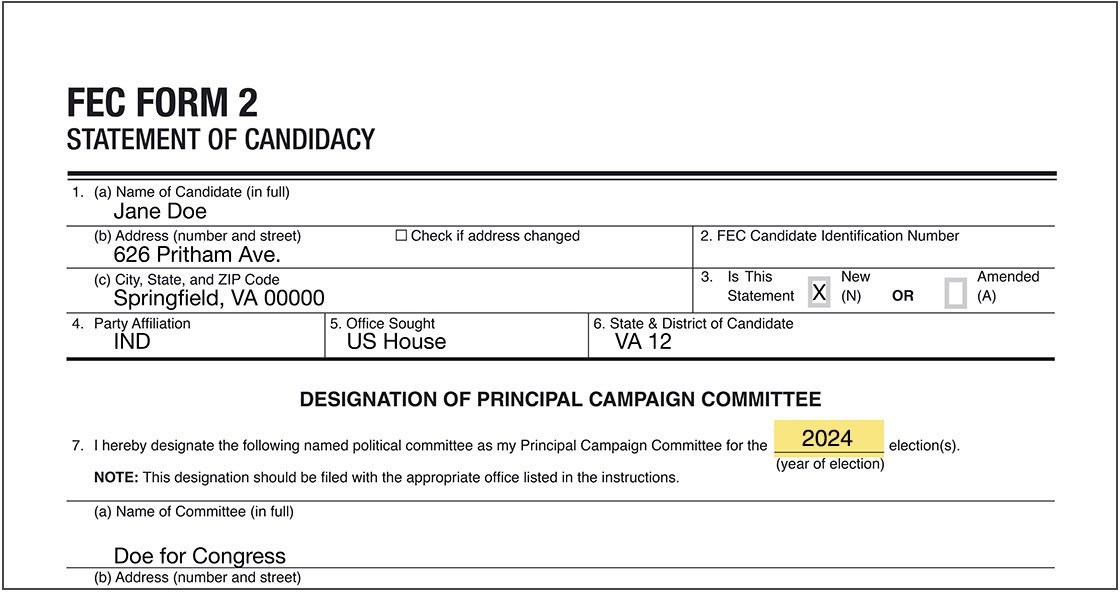
Statement of Candidacy with the year of election.
Note: If the candidate is running in a special election, the candidate must note that the designation is for a special election under the “Year of Election,” electronic filers can do this by attaching a memo text to the Statement of Candidacy. If the candidate also runs in the regularly scheduled election, the candidate must file an additional Form 2 and indicate the year of the election on the appropriate line. The election cycle dates will vary depending on the circumstances of the special election.

Memo text added to the electronically filed Statement of Candidacy to specify that the candidate is running in a special election.
Filing the report of receipts and disbursements:
Candidate committees must report receipts and disbursements on an election cycle basis on Form 3. The election cycle date range is used to calculate financial summary totals for categories of financial activity on the summary pages and determine whether a transaction must be itemized on the report. On the Summary and Detailed Summary Pages, Column A lists totals for the reporting period and Column B lists totals for the election cycle-to-date for various categories of receipts and disbursements.
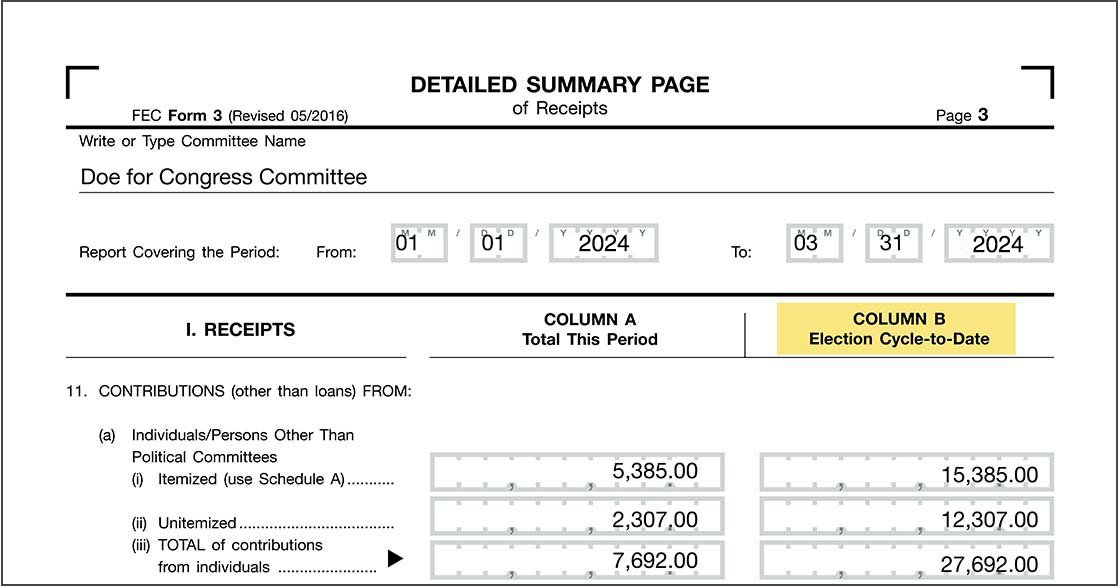
Column B used to report aggregate financial totals for the election cycle-to-date.
The requirement to itemize a transaction –to disclose the contributor’s name, address, contribution date and amount, employer, and occupation information for receipts, or the payee’s name, address, payment date, amount, and purpose for disbursements– depends on the category of activity but also the aggregate election-cycle-to-date total of all receipts or disbursements (within the same category) from or to the same entity.
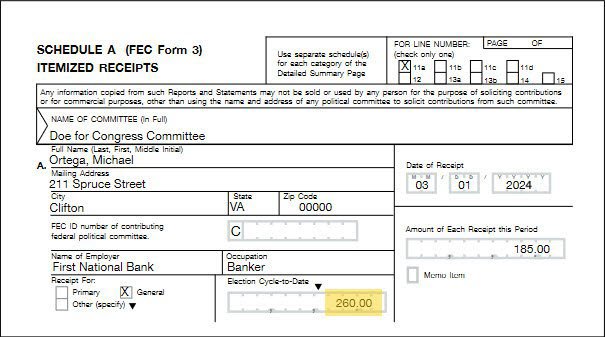
The Doe for Congress Committee received a contribution from Michael Ortega for $185 on March 1, 2024. When that contribution is aggregated with an earlier $75 contribution received from the same source during the election cycle, the aggregate total received from this contributor during the election cycle exceeds the itemization threshold for individuals ($200), so the details of the contribution must be itemized on Schedule A and the Election Cycle-to-Date total disclosed as $260.
More information on taking receipts, making disbursements, and handling loans, debts and advances.
Reporting with FECFile
When setting-up a candidate committee in FECFile, the software will display a prompt to enter the election cycle.
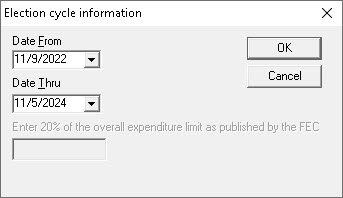
Enter the election cycle start and end dates.
At the Report Information page, select the election cycle (make sure it is the current election cycle).
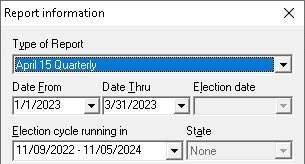
Choose the election cycle that corresponds to the coverage dates of the report.
Election cycle dates can also be entered by clicking the “View” menu and selecting “Election Cycles.” Then click the “Edit” menu and select “New.” Enter the date of the day after the previous general election in the “Date From” field and enter the date of the next scheduled general election in the “Date Thru” field. Then click “OK.”
